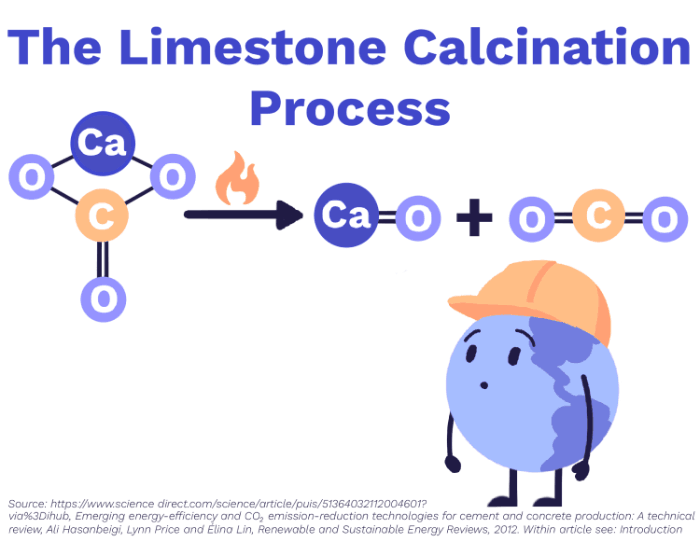Construction: Sustainable Steel & Cement
9 minute read
Updated on: 29 Aug 2021
The industrial revolution greatly changed how humans make stuff. While it has allowed for huge strides in societal development, however, industry as a whole was responsible for 29.4% of all greenhouse gases emitted in 2016 .
Most of those emissions come from burning fossil fuels to power the machines and factories involved in making everything from cars to matches . The remaining emissions come as by-products from chemical processes such as making cement or ammonia
.
This course will take you through many of the new and imaginative ways in which we are trying to make industry less polluting and more sustainable.
Let’s start with steel!
Global demand for steel is so high, that the iron and steel industry alone contribute approximately 6.7% of global CO₂ emission !
What is steel?
Steel is an alloy. This means it’s a combination of metals (mainly iron). Mixing this with certain other elements can create many different types of steel .
How much does this industry contribute to climate change?
Steel has the potential to be a very sustainable material because it lasts a long time, has high strength, and is easy to recycle .
However, steel production is quite an energy-intensive process.
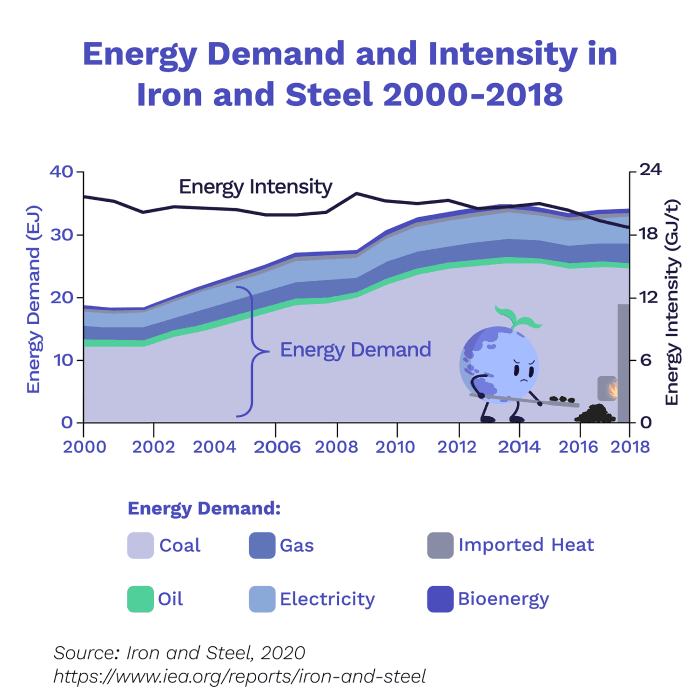
Energy demand for steel
For every tonne of steel produced, around 1.7 to 1.9 tonnes of CO₂ are emitted . To give you an idea of how big the industry is, in 2019 about 1868.8 million tonnes of steel were produced
!
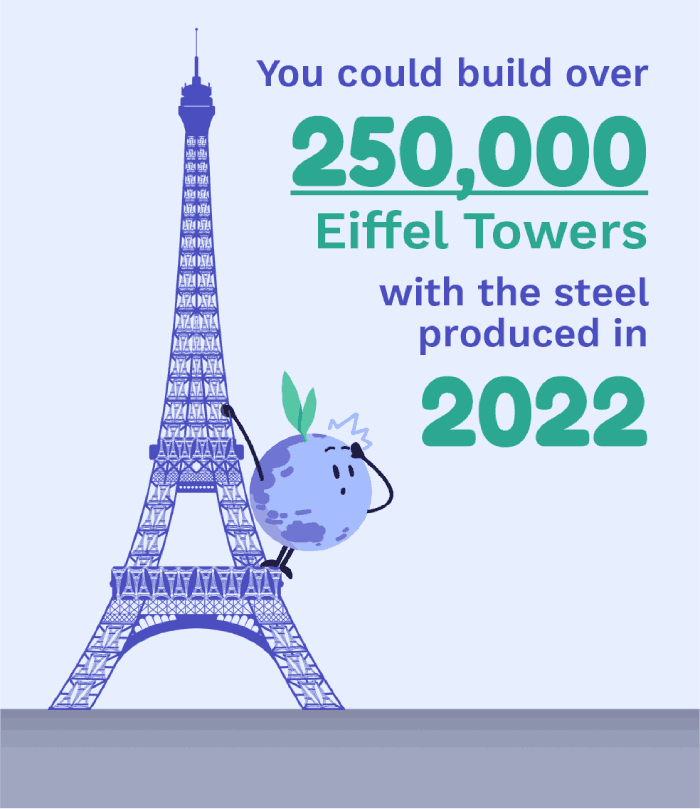
Steel production in 2019
How do we produce steel?
The making of steel takes three main stages :
- Preparing raw materials (coking) - Coal is heated to create coke (a carbon-rich fuel that produces lots of emissions)
.
- Ironmaking - Coke is then heated in a furnace along with limestone and iron ore. The iron ore is reduced into molten iron (meaning some oxygen atoms in the iron ore are replaced by hydrogen atoms)
.
- Steelmaking - Finally, impurities are removed from the molten iron to create steel
.
Although efficient new methods for this process have been developed, they are still based on those same three stages .
What can be done to reduce emissions?
To keep global warming below 1.8°C, the CO₂ intensity of steel would need to fall by an average of 2.5% annually from now on until 2030 . Sadly, the current trend does not follow this reduction path, therefore, it is very important to start changing the ways we make steel to cut down CO₂ emissions.
Remember, emissions in steel production are an effect of using coke and the high amount of energy needed in the process. So how do we reduce these emissions?
Recycling: Steel is 100% recyclable, so using recycled steel to reduce emissions is one way companies are trying to reduce emissions. This process uses 56% less energy than producing new steel
. In order to keep in line with the Paris Agreement, scrap needs to be used in 40% of all crude steel production by 2030
!
Direct Reduced Iron: Using Hydrogen as an alternative to coke could greatly reduce emissions. The Hydrogen would only create water vapour meaning there is a potential to eliminate CO₂ from the process!
Even though this technology is new and it faces many financial challenges, there is a lot of research and development going on around the world and a lot of opportunities for decarbonizing the steel industry. Now let’s learn about another major construction material: concrete!
What is concrete and why do we need it?
Concrete is a strong, long-lasting, and versatile building material .
Concrete is actually second only to water ! Unfortunately, this means that concrete production is responsible for a whopping 8% of global CO2 emissions
.
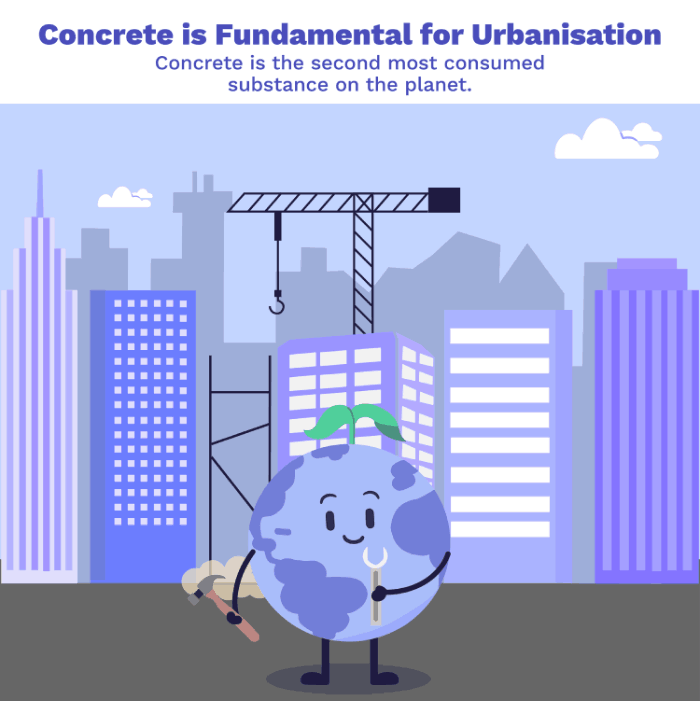
Concrete is the second most consumed substance on the planet.
How is concrete made?
Concrete contains three main components: aggregates (a mixture of sand, crushed stone, and gravel); a paste made out of water and cement; and air !
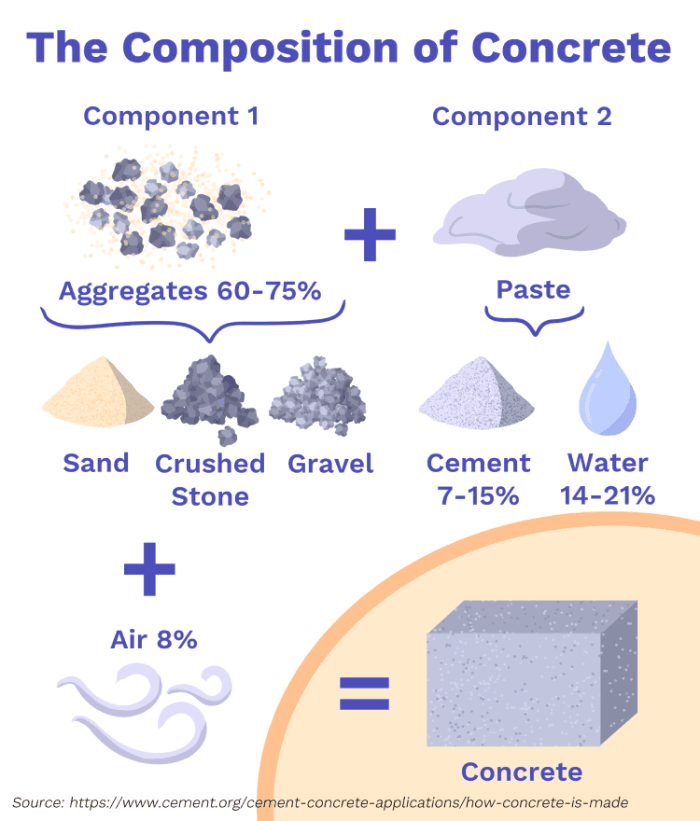
What is concrete made of?
Cement is a key element in concrete and is made out of gypsum and clinker
.
Clinker is made by a chemical reaction called limestone calcination . In this process, calcium carbonate (CaCO₃ aka limestone) is turned into calcium oxide (CaO) and carbon dioxide (CO₂)
. This process produces a lot of CO₂!
What are the environmental impacts of concrete and cement?
On a global average, the production of 1 kg of cement generates approximately 0.81 kg of CO₂ .
Cement manufacturing accounts for 90% of concrete emissions !
Can we make concrete without emitting CO₂?
In accordance with the Paris Agreement, CO₂ emissions from concrete production need to be cut 25% by 2050 to limit temperature rises over 2°C. However, current practices are not in line with this goal .
There are many promising solutions to achieve this :
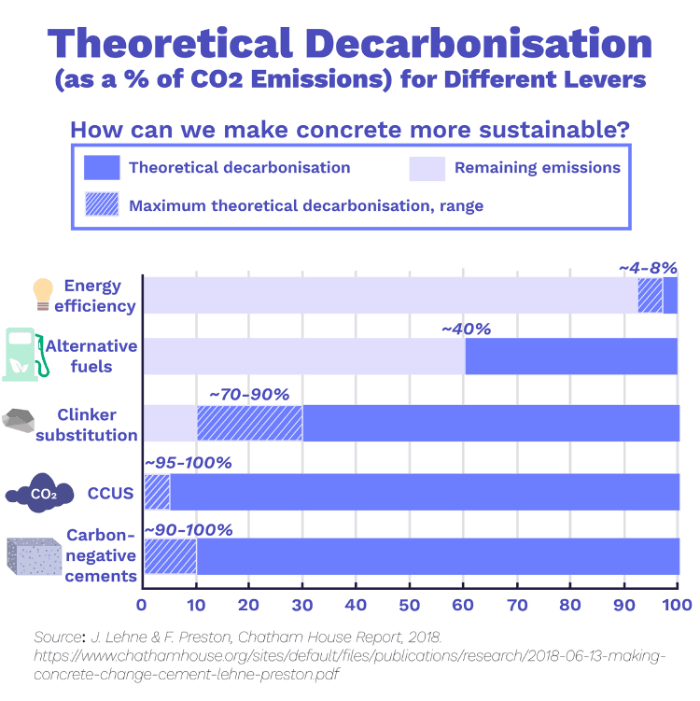
How can we make concrete more sustainable?
1. Improving energy efficiency:
Improvements in energy efficiency during cement manufacturing could reduce CO₂ emissions by up to 12% . About 65% of the thermal energy demand comes from heating the limestone to produce clinker, while the remaining ~35% is used to dry the limestone
.
2. Switching to alternative fuels:
In cement production, fuel is used to produce heat. On a global average, 70% of this fuel comes from coal and less than 6% of it comes from alternative fuels .
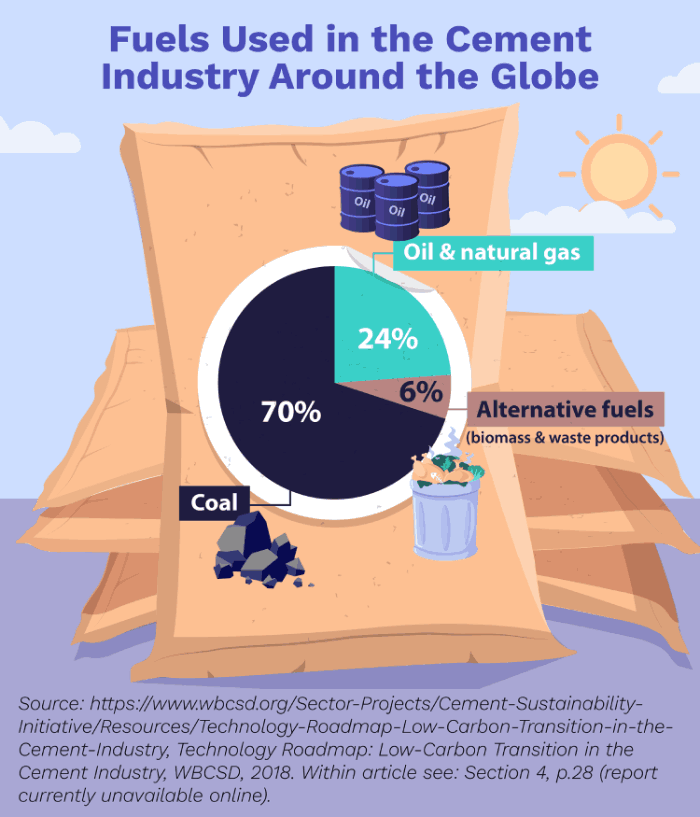
Fuel use in cement industry
We need physical fuels that can be burned, so nuclear and wind won’t work, but biomass and waste products can! These substitutions of fossil fuels could prevent up to 42% of current direct emissions in the cement industry !
3. Reducing clinker-to-cement ratio:
Producing 1 tonne of clinker releases around 0.706 tonnes of CO₂ . Clinker can be substituted with alternative materials with low carbon footprints or even zero net emissions
, such as granulated blast furnace slag (GBFS), fly ash (FA), pozzolanas and limestone
.
The use of these alternatives depends on many factors, mainly availability and price. Also, it is important to consider how the properties of the cement will be changed .
4. Carbon-negative cements:
Carbon-negative cements have the potential to store more CO₂ than is actually emitted during the manufacturing process! One way to do this is by using magnesium-oxide based cements, which could potentially absorb and store CO₂ from the atmosphere.
Although this technology is still being developed, it shows optimistic results for the future, as it could potentially absorb more CO₂ than is released throughout the production chain !
Conclusion
We’ve seen that there are many promising ways to reduce emissions from steel and concrete production, and more exciting ideas are likely to emerge in the future! With this insight, the future is clear: the concrete and steel industries can, and must, be transformed to meet global climate goals .
Next we’ll learn all about the textile industry!
Next Chapter


